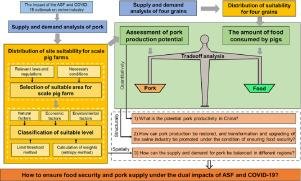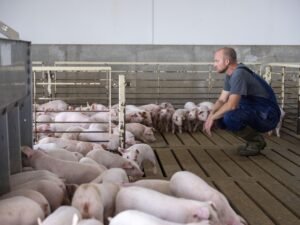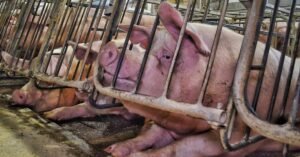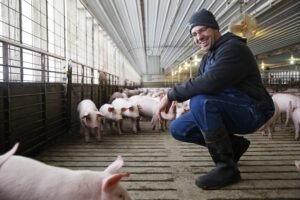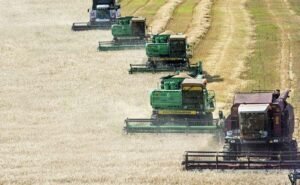When delegates from the U.S. pork sector traversed the stately boulevards of Washington, D.C. this spring, their mission carried a certain gravity—part pragmatic, part anticipatory. These advocates arrived not merely as representatives of rural economies or protein producers, but rather as emissaries for an industry standing at the threshold of intricate trade uncertainties and emerging prospects. From hog belt heartlands to marbled corridors on Capitol Hill, discussions ran deeper than just tariffs or quotas; beneath each statement glimmered recognition of trade’s shifting terrain.
Unexpected Turns in Market Outlook
For several years now, whispers about herd health and animal nutrition innovations have circulated through livestock summits. In 2025 however—a year that seasoned analysts once predicted might see a swift decline in global trade activity—the U.S. Department of Agriculture issued forecasts signaling a 2.7% increase in pork production and a concurrent upswing in hog prices by 4%. Such projections might have prompted farm-state senators to crow with satisfaction if not for lurking volatility elsewhere.
Uncertainty remains endemic—Rabobank analysts spoke recently of “modest” gains amid stabilizing profitability. Still, it’s peculiar how what appears stable on paper seldom aligns with pasture realities; regional blips ripple beyond spreadsheet margins into producer confidence itself.
Some meetings moved briskly from ethanol tariffs straight into granular talks about animal welfare protocols—an essential yet sometimes overlooked topic considering evolving consumer preferences between Tokyo and São Paulo. By linking biosecurity protocols (usually considered a technical subject) directly with market expansion arguments before policymakers, producers forced seemingly disparate conversations together without so much as an explanatory bridge between them.
Divergent Priorities and Interwoven Avenues
Critical among Washington’s agenda were three subject areas: sustaining export momentum through resilient trade agreements; mitigating international animal disease risks that can shutter exports overnight; and opposing non-scientific barriers frequently masquerading as food safety concern camouflage.
Uncommon idioms occasionally surfaced—a delegate quipped about no one wanting “to let sleeping hogs lie” when it comes to knocking down regulatory hurdles abroad. The phrase drew puzzled looks from congressional aides more accustomed to hearing statistical run-downs than agricultural proverbs borrowed from older times.
One wouldn’t expect biosecurity algorithms developed for disease tracing would end up retold alongside updates on meat labeling policies during high-stakes policy briefings—but association (sometimes random-seeming) appeared throughout many dialogues this season.
Consumer sentiment is another spool threading quietly through nearly all strategic plans; even so, product messaging oftentimes leans toward highlighting advanced traceability technology rather than richer flavor profiles or heritage breeds—which some marketers now argue could set American pork apart globally if only tradition was put front and center instead of traceability certificates pinned behind glass at export facilities.
Trade Winds Shifting—Or Holding Steady?
Key talking points at these events have often included anticipated headwinds: leveling beef supply driving shifts in Asian protein consumption patterns; seasonal pricing spikes across European livestock markets regularly clashing against price depressions felt sharply by South Korean importers every lunar cycle. The cognitive map connecting these nodes isn’t always logical—a point perhaps illustrated by one panel’s abrupt suggestion that resumed EU-U.S. negotiations might paradoxically hinder eastward sales volume gains because harmonization processes can create new forms of inertia disguised as opportunity flows.
A brief digression sprouted during another roundtable where someone posited whether increased efficiency brought on by decreased feed grain costs might ultimately discourage herd expansions—a line quickly walked back moments later (“Well perhaps I overstated the downside…”). Tangents like this cropped up periodically—proof perhaps that knowledge evolves mid-sentence for even industry veterans who typically keep their numbers well-ordered until conversation pulls them along unplanned tributaries.
On paper—and within prepared remarks—the outlook materialized as promising: lower input expenses combined with nimble cost structures place domestic producers advantageously compared both regionally (given fickle Brazilian rainfall) and internationally (thanks partly to tight shipping lanes outpacing frozen stock depletion).
From Boardrooms Back Into Barns
Upon returning homeward—to Lowa bedrock or North Carolina tidewater alike—delegates carried away freshly inked memos summarizing everything from foreign object control standards adjustment recommendations to requests for enhanced diplomatic engagement targeting Southeast Asian ministries wary after recent avian influenza headlines swept cable news feeds overseas.
Producers know the road ahead won’t involve tidy switchbacks but more likely resemble wheel tracks across weathered limestone: uneven but persistent progress made viable mostly through attention paid far beyond commodity prices alone.
Each advance meeting leaves unresolved inquiries trailing like stray pieces cut from pattern cloth—a subtle echo reminding everyone involved that good policy often grows sideways before blooming upright beneath fluorescent committee lights downtown while pigs meanwhile continue rooting restlessly out where no two sunrises ever quite repeat themselves exactly anyway.

